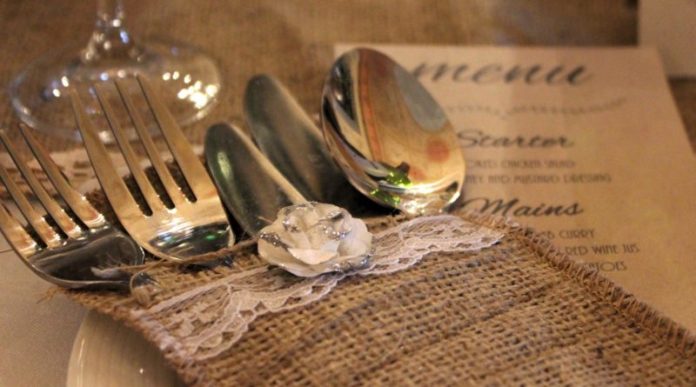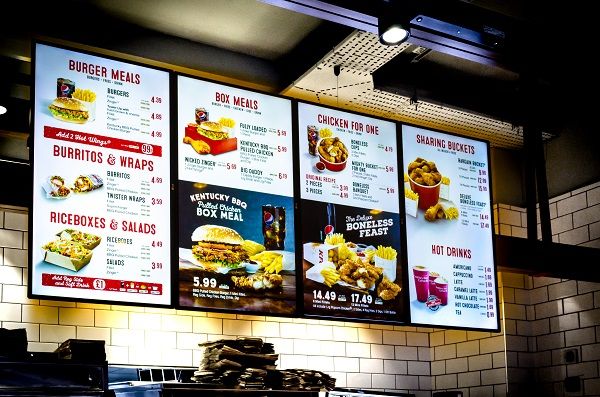For a restaurant, the menu is the most powerful communication tool. It not only introduces guests to your eatery and displays your food offerings, but it also reinforces your brand concept and personality. But to do so effectively, it needs to be designed in a particular manner. A customer only looks at a menu for 109 seconds before deciding what to order. Thus, not only does the restaurant menu design impact the customer experience, but the restaurant’s profits hinge on it as well. Unfortunately this ‘assumingly’ simple booklet has a lot of scope for errors that many restaurateurs tend to overlook.
Top Restaurant Menu Design Mistakes You Should Avoid
Here are some of the most common restaurant menu design mistakes you should avoid to run organized kitchens, keep customers happy, and build a more profitable restaurant business.
1. Poor Categorization Of Food Items
Having proper categorization of food items is one of the most basic rules but is often ignored. Your food menu design should be designed in a way so that items are listed in clear groups. The order of the categories is also important.
Appetizers, soups, burgers, pizzas, desserts, etc. should feature together and in order of serving. For example, entrés should not be listed before soups and appetizers, for your guests might be tempted to order the main course, and ignore appetizers. Also, featuring vegetarian and non-vegetarian dishes on separate pages is a good practice that should not be ignored.
2. Too Many Items
Both, a large and comprehensive menu, and a small, compact restaurant menu have their own pros and cons. However, while you may feel that having a comprehensive menu will give the impression of variety and capability, it can hurt your sales.
Guests take longer to decide what they want because of the multitude of options available – this slows down the time taken at the table, and you end up serving fewer customers. Also, a big menu more than often confuses people as they are not able to decide what you make best and so they default to the cheapest item.
It is also difficult to maintain the stock required for a large menu. It’s advisable to concentrate only on your specialties and unique foods that your chef can do justice to, and which will fetch new and repeat customers.
Refer to your menu performance reports and analyze which items are not contributing to the sales and remove them from the menu. This would help you reduce the wastage and also save up on the operational costs for producing those items.
3. No Change In Menu
The best restaurants are the ones where nothing is permanent – the menu keeps rotating, tempting guests to return. It is important to analyze and introduce new items on the menu to keep the customers hooked. Plus, you should also analyze the performance of menu items based on the sales and the feedback of customers.
Review the menu item sales report from your POS and if a particular item is not getting sold as much or is constantly getting returned to the kitchen, you should consider weeding it out from the menu. Also, you should analyze which items are being sold the most, and come up with new variations of the same item. This would also keep the customers hooked to your restaurant as they might get bored of having the same thing.
Don’t invest too much on expensive paper and printing, as even making a small iteration will hurt your pocket. A binding or an elastic menu will let you add an extra page quickly when you introduce new items. However, do not list new dishes to the menu if they are still in trial mode.
4. Lack Of Attention To Details
The menu is like your sales brochure. So, put in a lot of thought along with capital investment, while designing it. Engage the services of a good graphic designer who can help you design an aesthetically pleasing menu.
Keep the following tips in mind for creating a great restaurant menu design.
- The menu should be clear and readable.
- No matter how great your dishes are, selecting the wrong font style, size, color, and paper can make it difficult for a diner to scan the pages.
- Do not crowd the pages with too many elements or use a background that’s too dark and strains one’s eyes under dim lighting.
- Nothing is worse than reading a menu with typos. If you cannot spell a dish, it doesn’t instill confidence in the patrons that you can cook it. Hence, spellcheck your menu thoroughly.
- The menu should help customers who have never seen or heard of your restaurant, visualize the ambiance of your place, and the type of food served so that they know whether you offer casual or fine dining.
- Your menu should complement the size of the table, plate settings, and other aspects. It shouldn’t appear too large, bumping into cups and plates on the table, and making it awkward for the guests to hold it while having a conversation, or look too small on a large table.
5. Overemphasis On Price
Stressing on prices alongside items is the biggest food menu design mistake that you can make. It diverts the customer’s attention to the amount. This causes a guest to dismiss menu items based on price alone. Also, when the price of menu items drastically vary on a single page, it causes guests to select items with the lowest prices. Keep the dish the focal point and not the prices. The rates should be the same font and text as the menu.
6. Incorrect Pricing
Increasing the Selling Price arbitrarily just because the Food Cost is high and you’re trying to have a decent margin is one of the biggest menu mistakes that you must avoid at all costs. Just like customers have a certain preference for certain cuisines in each location, micro-markets also have a certain price point for individual menu items.
The audience in a particular location may be price sensitive and not willing to spend that much for the same item that is sold at the same price at a different location. Therefore, you must analyze your Menu Performance Reports to understand which menu items are being sold at what price points the most. You can run A/B tests, in this case, to reach upon a valid decision.
7. Ignoring Upselling Opportunities
Train servers to upsell certain items. But even without servers, upselling should be a part of your menu. Allow guests to add on cheese, mushrooms, olives, nuts, etc. to their dishes and have these options specified, so you don’t need to rely solely on the server.
Having Combo Meals is a great way to upsell add-ons such as beverages and desserts, which a customer otherwise would not have ordered. You can come up with smart Combo meals by analyzing the Popularity Index of your menu. Clubbing the most popular items with high-profit items is a great way to upsell and also boost sales.
8. Poor Use of Space
Have too many items on the same page and the menu is going to end up looking cluttered; have too few items and it’ll look like you don’t have much to offer. Thus, proper utilization of space, and that too keeping the customer psychology in mind is important. Place the high-profit items in the Golden Triangle of the menu – which is the upper left, upper right, and the lower bottom of the menu page.
These are the areas where customers usually tend to look at while placing orders. Also, use the front and back of the menu to display information about the restaurant. Information such as opening and closing hours, services, history, addresses, and more is a good idea. Visitors, especially the ones who are not from the state or country, sometimes take back menus as souvenirs.
9. Not Using Customer Psychology
Understanding the psychology of your customers can go a long way in pushing sales through food menu design. Guests’ eyes are usually drawn to the top right of the menu, making it a great place to list best-selling (expensive too) items. Use beautiful photos that are pleasing to the eye, as studies show that dishes with corresponding pictures are thrice as likely to be ordered than items that don’t have photos. However, use this tactic sparingly. If every item has a corresponding picture, the one you want to sell will not stand out.
This article will tell you how to employ customer psychology effectively to maximize your sales.
10. Not Having An Online Menu
Nowadays, many people like to check the menu online before choosing a restaurant. So make sure that you post your menu online. The best way to do this is to have your restaurant’s website where you can flaunt your menu. You can even tie-up with food delivery apps like Zomato and FoodPanda or online reservation services like WowTables, who also show your menus online. However, make sure your online restaurant menu design facilitates browsing and is mobile-friendly. Hence, refrain from posting it as a PDF.
11. Lack Of Menu Descriptions
Restaurant menu design that doesn’t describe items alienate customers and take up your servers’ time as they need to explain it. Give a brief and interesting description of your items, explaining if the dish is hot, cold, spicy, vegetarian, or contains nuts, gluten, or other allergy-inducing ingredients, especially if the cuisine you serve isn’t native to the land.
Find out how to write striking restaurant menu descriptions here.
A smart menu is primarily a result of careful analysis of what customers want by understanding their consumption patterns, balancing the food costs, and proper positioning. And to achieve this, you need to rely on the data that is generated from your POS system.
Read this insightful guide that talks in detail about how you can leverage your restaurant data to make critical decisions for your restaurant.





















Menu design mistakes affect your customer psychology. It is good to see an article that talks about small things that can make a difference in the restaurant sales and help uplift it.
The menu is the most significant piece of a marketing tool for any restaurant. There are a lot of mistakes that are seen today in a different menu, it is great to find an article that explains that menu mistakes can severely affect customer psychology and sales. Great Article.
A lot of restaurants end up having a big menu which in my opinion is a big mistake. It is better to have a small and compact restaurant menu that includes some great dishes instead of having a large menu with items you cannot sell and end up getting wasted.
Good article! Very Descriptive!
Very helpful for restaurant owners. Thank you for creating this article!
Excellent Post, but still after reading your post maximum people are not going to implement this, and those who implement this can come close to their goals